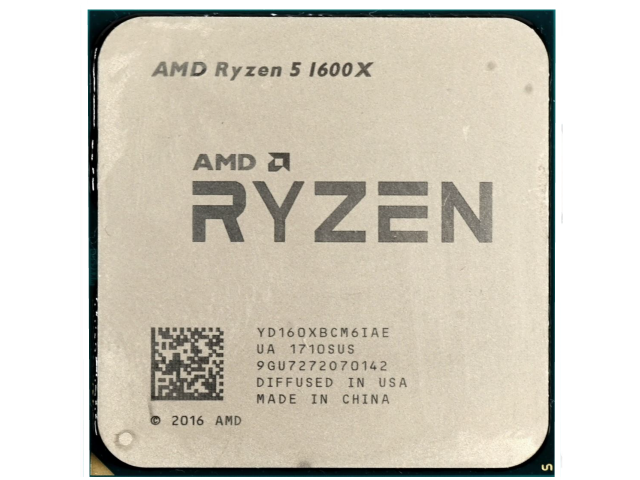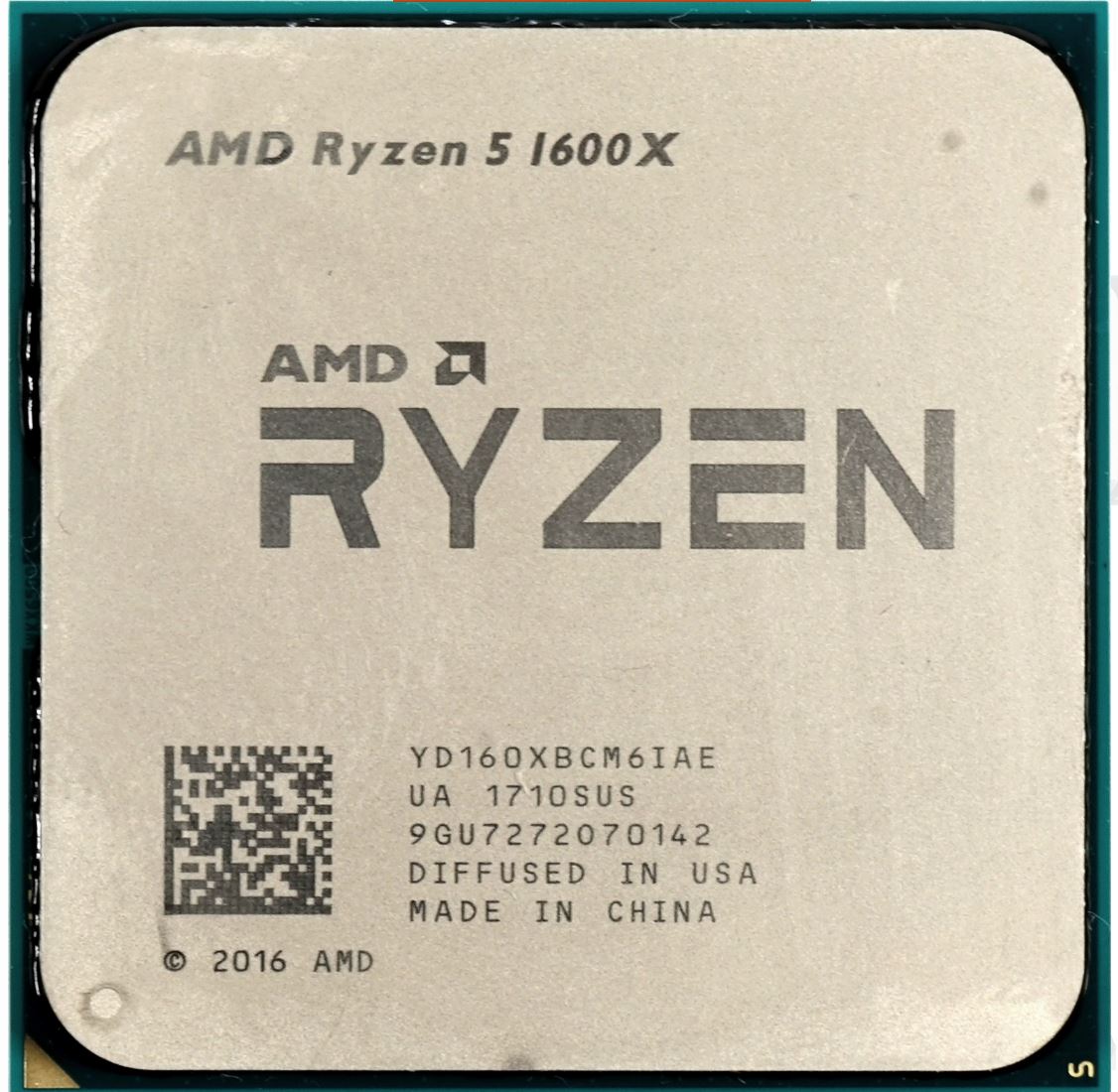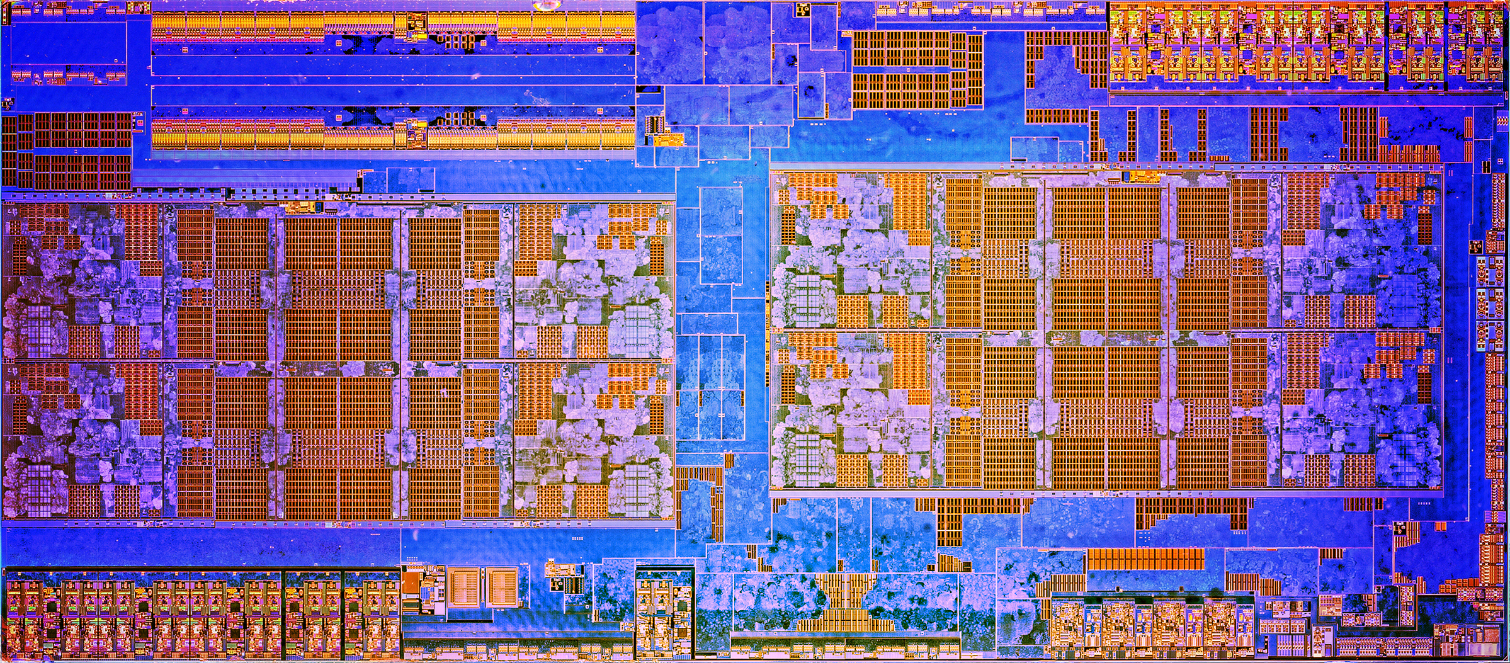Early Verdict
The Ryzen 5 1600X provides a tremendous price-to-performance ratio for budget workstations that rivals Intel’s Broadwell-E offerings. Ryzen 5 also provides playable performance in most games, but it lags the Intel competition and doesn’t have as much overclocking headroom.
Pros
- +
Strength in heavily threaded workloads
- +
Superior price-to-performance ratio for budget workstations
- +
Unlocked ratio multiplier
Cons
- -
High price relative to Core i5-7600K
- -
Lower overclocking headroom
Why you can trust Tom's Hardware
Introduction
The Ryzen 5 family shifts focus to enthusiasts and gaming with a quartet of six- and four-core models that line up against Intel's LGA 1151-based incumbents.
AMD began its assault on the high-end desktop with Ryzen 7. And while the 7-series introduced disruptive pricing and impressive performance to heavily threaded workstation apps (especially compared to Intel's Broadwell-E-based Core i7s), its 8C/16T configuration isn't fully utilized by most mainstream software, including games. Lower than expected frame rates, especially at lower resolutions, had many in the technology press wondering where the architecture was coming up short. But even if Ryzen 5 has the same issue, lower prices and a persistent core count advantage should set AMD up to battle fiercely on more mainstream platforms.
Similar to Ryzen 7, the Ryzen 5 processors lack on-die GPUs. This means they're destined to drop into PCs with discrete graphics cards, making them well-suited for the gaming market. AMD devotes all of the die's transistors to cores, cache, connectivity, and communications, allowing Ryzen 5 to tackle Core i5 and Core i7 with more host processing resources.
The $249 Ryzen 5 1600X is ambitiously aligned with Intel's Core i5-7600K. It comes with six SMT-enabled cores able to operate on as many as 12 threads in parallel. Like the flagship Ryzen 7 1800X, AMD's 95W 1600X features 16MB of L3 cache, a 3.6 GHz base clock rate, and a 4 GHz boost frequency. It includes the same dual-core 4.1 GHz eXtended Frequency Range setting that automatically activates if your thermal solution is beefy enough. And XFR also contributes to an all-core 3.7 GHz boost level for heavily-threaded workloads.
Intel's 91W Core i5-7600K, which only has four physical cores and 6MB of last-level cache, appears anemic by comparison. However, much of the Kaby Lake architecture's strength comes from excellent per-core performance. This is incredibly important in software that can't fully utilize multi-core configurations. Ryzen’s IPC throughput lags Intel’s by ~10%, even after the massive gains attributable to the Zen design. As a result, Kaby Lake maintains a per-core, per-clock advantage.
Specifications
AMD is also rolling out a $219 six-core Ryzen 5 1600, which drops to a 65W TDP, features a 3.4 GHz base clock rate, and 3.8 GHz boost ceiling. All of its other attributes, including the 100 MHz all-core and dual-core XFR boosts, remain the same as Ryzen 5 1600X.
The company has quad-core Ryzen 5s too. Its 1500X ($189) and 1400 ($169) both sport 65W TDPs. The former operates at a base clock rate of 3.5 GHz and can boost up to 3.7 GHz. The latter starts at 3.2 GHz, but has a maximum boost frequency of 3.4 GHz. Moreover, the 1500X benefits from a 200 MHz XFR boost setting and 16MB of L3 cache, while the 1400 model tops out with a 50 MHz boost frequency and 8MB of L3 cache. AMD aims its Ryzen 5 1500X at the $200 Core i5-7500, which should make for an interesting battle.
Get Tom's Hardware's best news and in-depth reviews, straight to your inbox.
All of the Ryzen 5 CPUs boast a familiar suite of features introduced with the flagship Ryzen 7s: unlocked ratio multipliers across the model range, the SenseMI suite, a dual-channel memory controller, and Socket AM4 compatibility. You can overclock any Ryzen 5 on X370- and B350-based motherboards, though we believe most of these cheaper chips will be paired to the less expensive B350 platform.
Keeping the value theme going, Ryzen 5 1400 comes bundled with AMD's Wraith Stealth cooler, while the 1600 and 1500X include the beefier Wraith Spire. AMD doesn't give you a heat sink/fan with its 1600X, assuming most enthusiasts will use third-party solutions.
We covered this design in Everything Zen: AMD Presents New Microarchitecture At HotChips. The Ryzen 5 family employs the same die as Ryzen 7, so it's similarly based on the four-core CCX (Core Complex) building block. AMD connects two CCXes using its Infinity Fabric interconnect, which also handles inter-processor communication like PCIe and northbridge traffic.
At birth, the Ryzen 5 models have eight physical cores. AMD then disables individual cores, either due to manufacturing defects or a need to segment its product stack, resulting in six- and four-core variants. The company indicates that Ryzen 5 processors have a symmetrical core alignment to avoid any odd performance trends that might stem from lopsided allocations. The six-core models have three active cores per CCX (3+3), and the four-core variants feature two cores per CCX (2+2). Each CCX includes 8MB of L3 cache, and AMD surprisingly leaves all of the cache enabled on most models. Only the quad-core Ryzen 5 1400's L3 is trimmed down to 8MB total.
As a result of their physical similarities, a lot of Ryzen 5's characteristics mirror what we saw from Ryzen 7. For instance, overclocking on Ryzen 5 appears to top out somewhere between 3.9 and 4.1 GHz. That's a notable weakness compared to Intel's K-series Kaby Lake SKUs.
| Ryzen Memory Support | MT/s |
|---|---|
| Dual-Channel/Dual-Rank/Four-DIMM | 1866 |
| Dual-Channel/Single-Rank/Four-DIMM | 2133 |
| Dual-Channel/Dual-Rank/Two-DIMM | 2400 |
| Dual-Channel/Single-Rank/Two-DIMM | 2677 |
Ryzen 5 processors feature the same stock memory guidelines as Ryzen 7, which vary based on the type of memory and number of modules you plan to install. AMD’s gaming performance is known to scale better with memory bandwidth than Intel's processors, so good memory is critical to Ryzen 5. We’ve seen motherboard manufacturers send out rapid-fire firmware updates to address issues like overclocked memory support, but the ecosystem continues to evolve. We're also waiting for certain user experience problems to be solved. As an example, we recorded an average of ~65 seconds from power-up to the Windows desktop on our Ryzen samples, while Intel CPUs only take ~20 seconds.
Nevertheless, things can only get better for AMD from here, particularly with a new line of CPUs to address an even larger slice of the enthusiast market. Can Ryzen 5 improve upon Ryzen 7's value proposition, or does the culling of on-die resources step the architecture backwards? Today's review zeros in on Ryzen 5 1600X. However, the 1500X is right behind (we even have some enlightening thermal results from the 1500X on page eight). Ryzen 5 1600 and 1400 will follow in short order, too.
MORE: Best CPUs
MORE: Intel & AMD Processor Benchmark Comparisons
MORE: All CPU Content
Current page: Introduction
Next Page The Infinity Fabric: A Blessing And A Curse
Paul Alcorn is the Editor-in-Chief for Tom's Hardware US. He also writes news and reviews on CPUs, storage, and enterprise hardware.
-
ninja_warrior If you can reliably overclock any of the ryzen 5/7 to 4.0, why would you get the 1600x over the 1700? Comparing a 1600x at 4.0 to a 1700 at 3.0 and then concluding that it's a better CPU when the 1700 can overclock exactly the same seems pretty stupidReply -
bloodroses A little disappointing for the Ryzen 5's imo. You'd think with the reduced core count you'd get better frequencies (and OC'ing) than what you get with the Ryzen 7.Reply
I honestly don't see a reason why to get a Ryzen 5 at this point since the i5 is definitely better for gaming and the Ryzen 7 is better for workstation use. The price alone takes it out of its own market. -
tamban A CPU review with only gaming benchmarks? Tom's hardware really likes Intel's hardware.Reply -
FormatC Reply
Try page 10 :P19547998 said:A CPU review with only gaming benchmarks? Tom's hardware really likes Intel's hardware.
31(!) Workstation benchmarks. Too less?
-
Oranthal How about a real world test where you play a game and run a 1080p stream then compare performance? How about 1440p? How about broadening the scope of testing? Nah just ignore the strength of more cores and focus on single thread work and a few games.Reply -
irish_adam you say that the i5 7600k comes out on top at stock but just on the gaming benchmarks i make it 4-4 with 2 draws. I wouldnt say that it came out on top at all. I would say they are pretty evenly matched at the moment. Also apart from the odd couple from both sides their frame difference was less than 10, at over 100FPS i'd pay good money that no one would be able to distinguish a difference between either system.Reply -
elbert Great review Paul and Igor. Best review I have seen given its the only review with 2 intel cpu's in the price range of Ryzen 5. The RAM info is great which shows that Ryzen gains a real 9ns latency advantage using higher clocked RAM on the Ryzen 5. Given the Ryzen 7 has less cache per core I would expect that gain to be higher.Reply
An issue that does stick out here is high price of the overclocking solution. How does the 7600k fair with a stock intel heatsink compared to the 1600x wraith spiral best overclocks? I think Ryzen has a real price advantage given the cooler required for a reasonable overclock.
Also how does the 7600K compare in games while twitch streaming against the 1600X? -
dstarr3 Reply19548037 said:How about a real world test where you play a game and run a 1080p stream then compare performance? How about 1440p? How about broadening the scope of testing? Nah just ignore the strength of more cores and focus on single thread work and a few games.
Maybe that's your real-world test, but that isn't mine. And am I the only one that can see the workstation benchmarks on page 10? Everyone seems to be ignoring them and then complaining that they aren't there.


